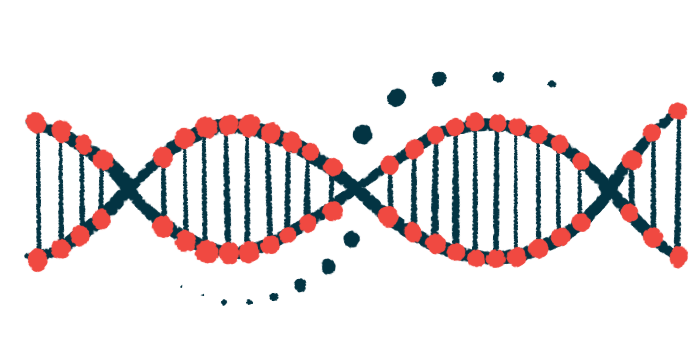Changes in tumor cells help make ovarian cancer treatment resistant
New research findings could lay groundwork for more effective therapies

Specific genetic changes in small populations of tumor cells can help to make ovarian cancer resistant to treatment, a new study by U.S. researchers revealed.
According to the team, this finding could lay the groundwork for more effective ovarian cancer treatments.
The researchers developed a new strategy that uses blood tests to track the evolution of treatment-resistant cells in people with ovarian cancer. Ultimately, per the team, this method may help identify and target the populations of cells that underlie the recurrence of this type of gynecological cancer, which is known for relapses.
“Our approach enables quantification of the contribution of therapeutic selection pressure in patients and provides a foundation for evolution-informed adaptive clinical trials,” the scientists wrote.
The study, “Tracking clonal evolution during treatment in ovarian cancer using cell-free DNA,” was published in the journal Nature.
Ovarian cancer, as its name suggests, typically originates in the ovaries or, in many cases, the cells lining the fallopian tubes. There are a few subtypes of ovarian cancer. The most common and most deadly is known as high-grade serous ovarian cancer or HGSOC.
Treatment resistance among reasons ovarian cancer is often fatal
There are a few reasons why HGSOC is so often fatal. One is that the cancer often goes undetected until it reaches advanced stages, when treatment is more difficult. Another is that tumors will many times develop resistance to commonly-used cancer treatments like chemotherapy.
But while it’s well-established that HGSOC can develop resistance to cancer treatments, the biological mechanisms by which these ovarian tumors actually become resistant are not fully understood.
To learn more, a team led by scientists at Memorial Sloan Kettering Cancer Center in New York analyzed genetic data from 18 ovarian cancer patients.
For this analysis, the researchers first looked at the genetic code of tumor samples that were removed during early surgery. They identified specific mutations that were seen in the tumor cells but not in these individuals’ healthy tissue. Then, over the course of treatment, the researchers collected blood samples from the patients.
The researchers isolated DNA from the blood, then looked for tumor-specific mutations to specifically identify the tiny amounts of DNA found in the cancer cells.
“Essentially, we were able to use these structural variants as molecular ‘bar codes,’ which allowed us to track tumor cells’ subpopulations in the bloodstream,” Sohrab Shah, PhD, senior author of the study at Memorial Sloan Kettering, said in a press release.
It’s been known for years that, within tumors, different individual cancer cells may harbor different genetic changes, some of which can affect treatment response. A notable advantage of this novel analysis strategy is that the researchers were able to look at multiple different genetic subpopulations of cancer cells, and track them over time.
According to Marc Williams, PhD, a postdoctoral researcher at Memorial Sloan Kettering and the study’s first author, HGSOC tumors “contain a diverse array of cells, some of which will be sensitive to our best treatments and some of which will be resistant.”
Williams noted, however, that “existing methods to monitor these cancers … don’t distinguish between one population and the other. So, we decided to build one that could.”
New strategy already has helped 1 patient in study
Through their analysis, the researchers determined that HGSOC usually develops resistance when small populations of cancer cells with specific genetic changes grow to take up more of the tumor. These resistant cells are present in small numbers before treatment, but after treatment they start to take up more and more of the tumor.
Shah noted that “using this new method, we could see that the cells that are resistant were present at the time of diagnosis, and that they were able to multiply as cells that were more sensitive to treatment died off.”
The scientists identified several specific genetic changes common in these cells, including amplifications of certain cancer-driving genes (oncogenes) and chromothripsis — a phenomenon in which a cell’s DNA breaks apart and then stitches itself back together in new patterns.
Using this new method, we could see that the cells that are resistant were present at the time of diagnosis, and that they were able to multiply as cells that were more sensitive to treatment died off.
Williams said the team is hopeful that this new understanding of HGSOC resistance could help pave the way toward better treatments for patients.
“Together, these findings provide new opportunities to develop treatment strategies to attack vulnerabilities associated with those features,” Williams said.
As an example, the researchers highlighted the case of one patient in the study. This individual’s cancer developed resistance to chemotherapy after the expansion of cancer cells bearing amplification of an oncogene called ERBB2.
Following the team’s discovery, the patient was treated with trastuzumab deruxtecan (sold as Enhertu), which is a medication approved for other cancer types that works to block the activity of ERBB2. The patient had a complete response to treatment and has been cancer-free for three years as of the latest follow-up, the team noted.
Added Shah: “And because we have a drug that specifically targets ERBB2, this evolutionary shift left the entire tumor sensitive to a new, targeted treatment.”








